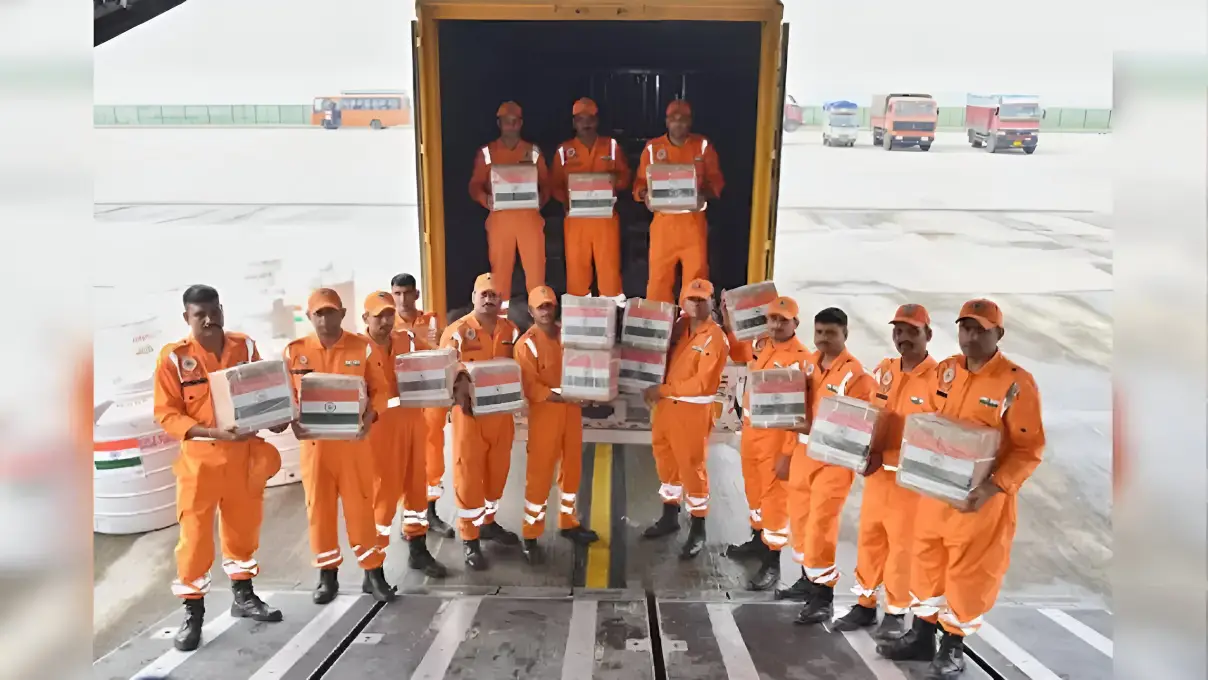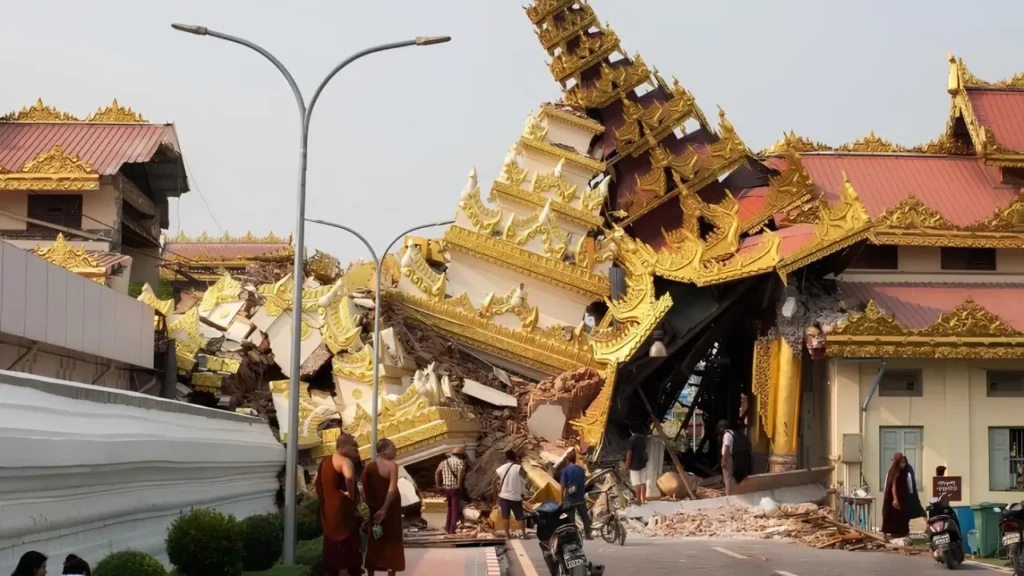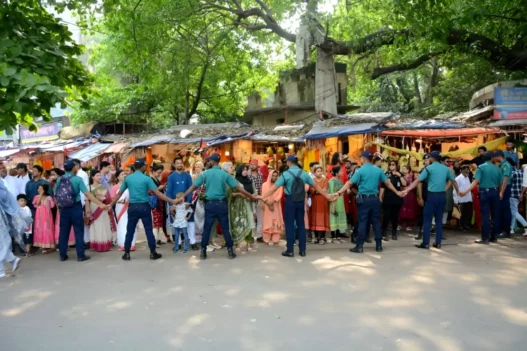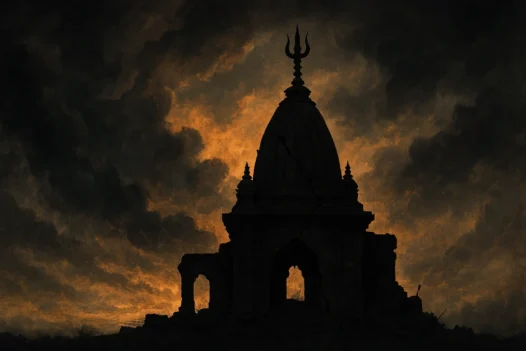India leads relief efforts
Soon after the 7.7-magnitude earthquake struck central Myanmar, tremors rippled through neighbouring Thailand, sending waves of fear and uncertainty across the region. But beyond the shaking ground, another kind of tremor coursed through social media—one of helplessness, shock, frustration, and grief, woven with the desperate hope of reaching loved ones.
A Burmese individual living in Thailand captured the haunting reality of the earthquake in a deeply personal account on his Facebook:
While writing in my seventh-floor apartment, an earthquake struck. As the tremors grew stronger, I instinctively thought, “This is it,” and hurriedly took cover under the desk. In that brief moment of life and death, I realised something deeply unsettling—when it truly comes down to survival, people can’t even do anything for themselves, let alone for others. When the second tremor hit, the building’s alarm blared, forcing everyone to rush out. Alerts kept coming—where to take shelter, when it was safe to re-enter the building.
Even though I personally experienced the earthquake, the difference in systems made survival easier for people here. But back home, where my loved ones and my people live under a failing system, buildings collapsed, lives were shattered, and rescue efforts were left to the people themselves. A system that should protect them is nowhere to be found.
My mother is safe, but our house now bears deep cracks. In Mandalay, I still can’t reach my relatives.
Seeing the people I love, the land I cherish, suffering—watching helplessly as everything crumbles, as voices cry out, as bodies pile up—this is a kind of hell I never imagined.
And my heart breaks over and over again.
These words reflect not only the devastation wrought by the earthquake, which has left thousands dead and many more injured, but also the unbearable weight of a crisis unfolding in a country already torn apart by conflict. “The pain of seeing people dying from this devastation caused by the earthquake is like adding salt to our wounds,” said Aung Khin a resident of Yangon. As if the turmoil from ongoing violence was not enough, another catastrophe has struck, deepening Myanmar’s suffering. The US Geological Survey has estimated that the death toll could surpass 10,000.

For many, this disaster rekindles painful memories of Cyclone Nargis in 2008, which killed over 100,000 people and left millions homeless. At that time, Myanmar was emerging from decades of military rule, and international relief efforts were severely restricted. Now, the situation has shifted—though uncertainty remains. Military ruler and head of the State Administration Council (SAC), Senior General Min Aung Hlaing, has called for international relief and humanitarian aid. Unlike 2008, this could allow assistance from Western nations, as well as support from Asia and the Middle East, to reach the affected regions.
However, the military leader’s move has been met with deep scepticism. Critics view it as a ploy to tighten his grip on power amid mounting resistance since the February 2021 coup. Others, however, believe it to be a calculated manoeuvre aimed at reinforcing his position. “Senior General Min Aung Hlaing has made a strategic move at the right time, especially with rebel groups remaining quiet and the National Unity Government (NUG) yet to issue a strong response,” said an exiled resident of Myanmar now living in the US.
Immediately following the earthquake, the military ruler took to state media to declare a state of emergency in affected areas, pledging to open all possible channels for international assistance. India responded swiftly under ‘Operation Brahma,’ reaffirming its role as a First Responder in Myanmar’s crisis. Prime Minister Narendra Modi stated on March 28 that India has always upheld its commitment to aiding its neighbours in times of distress. The Indian Ministry of External Affairs (MEA) confirmed that the first shipment of 15 tonnes of relief supplies—tents, blankets, sleeping bags, food packets, hygiene kits, generators, and essential medicines—has already arrived in Yangon.
China, too, has joined in the rescue efforts, dispatching an international rescue team to assist in relief operations. Meanwhile, the ASEAN Coordinating Centre for Humanitarian Assistance on Disaster Management (AHA Centre) has mobilised emergency aid to Myanmar.
Since the initial quake, at least 14 aftershocks have shaken Myanmar, with the strongest, a magnitude 6.7 tremor, striking just 10 minutes after the main event. The devastation is particularly severe near Mandalay, Myanmar’s second-largest city, where collapsed buildings and deep fissures in the earth paint a grim picture of destruction. The tremors, stretching north and south, leave behind a fractured land—a reflection of a fractured nation.
As rescue operations continue and the world watches, Myanmar’s tragedy is more than just a natural disaster. It is a calamity layered over an already bleeding wound, a stark reminder of the fragility of life in a country that has seen too much suffering. And for those who remain trapped in the ruins—of both the earthquake and the political turmoil—hope is a currency growing ever more scarce.
#OperationBrahma @indiannavy ships INS Satpura & INS Savitri are carrying 40 tonnes of humanitarian aid and headed for the port of Yangon.
🇮🇳 🇲🇲 pic.twitter.com/MJcG9Dbgnj
— Dr. S. Jaishankar (@DrSJaishankar) March 29, 2025







